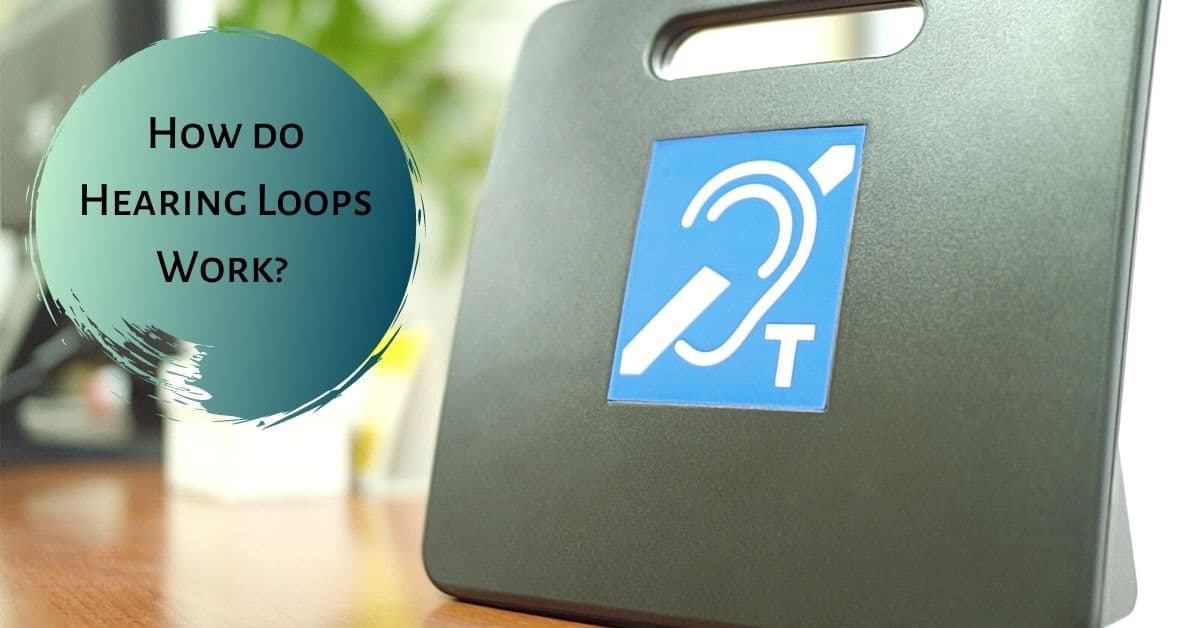If you are choosing your next pair of hearing aids one important feature to consider is whether or not you would like your hearing aids to be equipped for hearing loops. Hearing loops are a common assistive technology, also known as telecoil loops or induction loops, which can transmit audio directly to your hearing aids.
Many people are unfamiliar with hearing loop technology before they treat their hearing loss. It’s important to understand how it works and how it can help you when considering whether telecoil equipped hearing aids are the right choice for your needs.
What Are Hearing Loops?
A few basic components go into building a hearing loop. First, sound is collected from a microphone. It is then amplified, proceeding the sound and sending it through a loop of copper wire. The sound transmission in the wire generates a magnetic field that reflects the frequencies of the original sound. When a hearing aid is switched to “telecoil” mode, it is able to pick up these magnetic signals and transmit them as clear and focused sound directly to the ear canal.
Hearing loops transmit sound in a bounded area through magnetic induction. Magnetic induction is a complex concept, it is based on the magnetic field created when current is run through wire. The greater the current, the larger the magnetic field. Magnetic fields emanate outward perpendicular to the direction of electrical current, so when a wire loop is run around the perimeter of a room the magnetic field projects into the open area of the room.
The area covered by a hearing loop is roughly bounded by the loop itself. The range of the induction signal is designed to cover the area enclosed by the loop, additionally a weaker telecoil signal can be picked up a little outside of the looped-in area.
The Advantages of Hearing Loops
Magnetic induction loops offer several advantages for enhancing hearing. First, magnetic fields aren’t interrupted or distorted by physical obstacles in the same way as radio waves can be, so they offer more consistent sound throughout the area they cover. Induction loops can also perform at a wide range of sizes- small loops can be used at bank teller windows or customer service desks, while large loop systems may encompass an entire airport or conference room.
Hearing loops are simple to access when your hearing aids are equipped for them. You simply turn on the telecoil switch or control on your hearing device and the audio from the loop streams directly to your ear, there is no “tuning in” to a certain signal or frequency.
While hearing loops aren’t easily moveable and don’t work for audio environments that require containment, like courtrooms, they are an effective technology for established spaces where hearing access is needed.
Hearing loops are quite common in public spaces, including theaters, transportation stations and vehicles, schools, meeting rooms, places of worship and civic buildings. Accessing hearing loops with your hearing aid can help cut out distracting background noises from your hearing aid so you can focus on announcements, or a specific speaker. Many hearing aid users with active lifestyles appreciate the accessibility hearing loops offer – making it easier to do everything from cash a paycheck, to following the dialogue of a play, to participating in local government, to tracking a changed gate at the airport.
Using hearing loops gives hearing aid users more access and autonomy, especially in noisy environments. They can make the complex soundscapes of traveling more focused and easier to navigate. Hearing loops stream sound directly to your ear which can make listening to a speaker in a large space like a church or lecture hall far easier. Even sports and entertainment can be easier to follow and enjoy using a telecoil-equipped hearing aid.
How To Find Hearing Loops
It is easy to find where hearing loops are located by looking for the telecoil symbol: the outline of an ear with a diagonal bar passing through it and a small “T” at the lower right. This symbol is usually designed as white lines on a blue background but can also vary. Many spaces with hearing loops will place this symbol in a front window or entrance doorway. You can also check websites or call ahead to destinations to see if hearing loops are being used.
Are you interested in incorporating telecoil technology into your everyday life? Contact us today to learn more about our hearing aid products and how they can benefit you.

